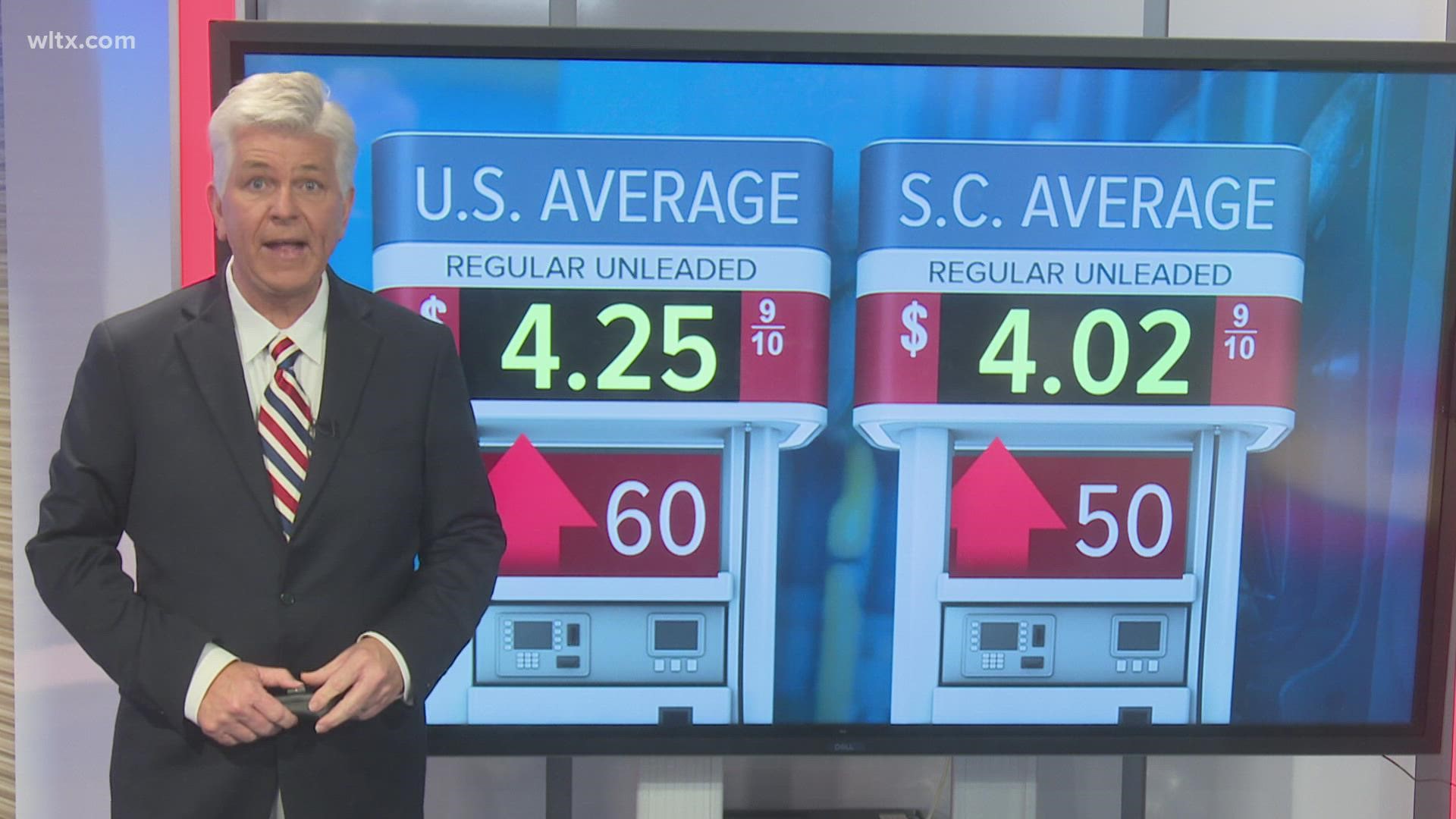WASHINGTON — With gas prices on the rise, we're all looking to make that full tank last a little longer.
Here are a few tips to help you do just that, thanks to the American Automobile Association (AAA).
- Keep tires properly inflated. Underinflation reduces fuel economy, but more importantly, tires low on air degrade handling and braking, wear more rapidly, and can overheat and blowout.
- Slow down and drive the speed limit. On the highway, aerodynamic drag causes fuel economy to drop off significantly as speeds increase above 50 mph.
- Avoid “jackrabbit” starts and hard acceleration. These actions greatly increase fuel consumption.
- Avoid extended idling to warm up the engine, even in winter. It’s unnecessary and wastes fuel.
- Avoid prolonged idling in general. If your car will be stopped for more than 60 seconds, shut off the engine to save fuel. Many newer cars have automatic engine stop-start systems that do this.
- When driving in town, adjust your speed to “time” the traffic lights. This reduces repeated braking and acceleration that consume additional fuel.
- When approaching a red light or stop sign, take your foot off the gas early and allow your car to coast down to a slower speed until it is time to brake.
- Accelerate smoothly with light to moderate throttle. This allows the automatic transmission to upshift into higher gears sooner, reducing engine rpm and saving fuel.
- Use cruise control to help maintain a constant speed and save fuel. However, never use cruise control on slippery roads because a loss of vehicle control could result.
- If your car has a manual transmission, upshift as soon as you can without “lugging” the engine. When practical, you can also save fuel by skip-shifting – for example, going directly from first gear to third.
- Minimize your use of air conditioning. Even at highway speeds, open windows have less effect on fuel economy than the engine power required to operate the air conditioning compressor.
- Plan ahead to accomplish multiple errands in one trip, and whenever possible travel outside high-traffic times of day.
- If you own more than one car, use the most fuel efficient model that meets the needs of any given journey.
- In hot weather, park in the shade or use a windshield sunscreen to lessen heat buildup inside the car. This reduces the need for air conditioning (and thus fuel) to cool down the car.
- Remove unnecessary and bulky items from your car. It takes more fuel to accelerate a heavier car, and the reduction in fuel economy is greater for small cars than larger models.
- Minimize your use of roof racks and remove special carriers when not in use. On the highway even an empty bike, canoe or ski rack can reduce fuel economy, and a loaded rack or car-top container will have a major effect on gas mileage.
- AAA research has found that unless premium fuel is recommended or required by your car’s manufacturer, it provides no added benefit. Motorists should refer to their vehicle’s owner’s manual to check which type of gasoline is recommended for their engine.

